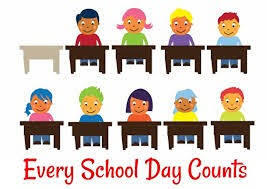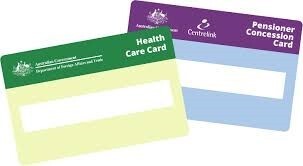Filter Content
Dear Parents and Guardians
SAVE THE DATE – FUN FOOD AND FAITH
On Saturday 12 August, St Clare’s will be celebrating Mass together at St Patrick’s Church at the 6pm Parish Mass. Afterwards, families are welcome to stay for pizza. Further details and a booking form will be available shortly.
UNIFORM
With the new term, it is timely to remind parents that all students are to wear their uniform perfectly and proudly. This includes footwear, the tie and the correct uniform on the correct day.
THANK YOU
The Years 3 to 6 students had a wonderful day at theit Athletics Carnival on Monday. We are grateful to all who assisted. Without everyone's help and organisation events such as this cannot occur.
Confirmation
Please pray for our 34 students in Year 6 who are preparing for the Sacrament of Confirmation.
A reminder to all parents/carers that the link for booking in for Saturday 19 August at 3pm or 6pm Mass will not be live until 10am on Tuesday 25 July.
St Patrick's Parish, Pakenham: Confirmation 2023
The link is on the St Patrick’s Parish website under Menu - Sacraments - Confirmation.
Please book on this day to avoid disappointment - there are set numbers for each Mass.
Please note that you will need the Baptism date, First Holy Communion date, Saint name and Sponsor name at the time of booking.
Don’t forget:
The Confirmation Commitment Mass is now Saturday 5 August (not the following week as previously stated) at 6pm at St Patrick’s Parish. Confirmation candidates are expected to attend this Mass.
The Parent Evening (for parents only) is on Thursday 10 August at 7pm at St Patrick’s Parish hall.
If you have any further questions, please contact Gab Verstraete via email.
Please complete the Application for Leave During Term Form if your child is going to be absent for more than 3 school days. The form is below and can also be accessed via PAM in the Knowledgebank.
Here is the link for the St Clare's Parent Access Module (PAM)
St Clare's PAM
You username is the email address that you have registered with the school. The first time you log in we ask that you use the forgotten password feature to set your own password.
ALL parents must access PAM to receive up to date information and grant necessary permissions. Students will miss out on events if permission is not granted.
School Fees
Term 3 fees are now due and payable.
If you are experiencing financial difficulties please contact the school via finance@stclaresofficer.catholic.edu.au for a confidential discussion.
If you financial situation has now changes and you have a Pension or Health Care Card please let us know that this will impact your school fees payable.
In this edition of SchoolTV - GRIEF & LOSS
Grief is a natural response to loss. It might be the loss of a loved one, relationship or even a pet. The more significant the loss, the more intense the grief is likely to be. Children and adults grieve differently due to their developmental stage, and this can prove difficult for parents to understand.
Young children fluctuate in and out of the stages of grief rapidly, as they may not comprehend the permanency death. They express their grief more physically. Teens on the other hand may not know how to express their grief and will need some space to process their loss. Some may choose to grieve alone, not wanting to stand out or be seen as not coping. Whilst others, who may have a greater understanding, can start to question their own mortality.
In this edition of SchoolTV, parents can learn how to acknowledge their child’s feelings and the best way to support them through the grief.
We hope you take time to reflect on the information offered in this edition of SchoolTV and we always welcome your feedback. If you have any concerns about your child, please contact the school counsellor for further information or seek medical or professional help.
Here is the link to the Grief & Loss edition of SchoolTV
https://stclaresofficer.catholic.schooltv.me/newsletter/grief-loss
How to Help Kids Stay Safe Online
Adapted from: https://www.esafety.gov.au/about-us/blog Office of the eSafety Commissioner
- Start the chat
It’s not possible to be at your child’s side every second of the day, so it’s important to talk with them about online safety issues to help develop their critical thinking and ability to make good choices. It’s also good to let them know they can come to you for help if they have any concerns. You may feel they know more about the latest technology than you do, but you have more life experience to guide them.
- With primary school aged children use online devices in the open living spaces at home to make parent supervision part of the expectation for your child.
- Take the opportunity to set some boundaries around when and where they can use devices like tablets, smart TVs and gaming consoles, to help limit potential tech tantrums — you could even fill in an Early Years Family Tech Agreement
- Screen free time before bed is important for good sleep. Consider charging devices in a central location at a regular time each night to allow an hour screen free before bed.
- While you are all at home more, it’s a great time to co-view and co-play with your kids, so you can understand what they are doing and experiencing online.
- Learn about the games, apps, social media and platforms they are using at The eSafety Guide, including how to protect their information and report inappropriate content or conduct.
- Use parental controls and safe search options
Parental controls can help block your child from accessing specific websites, apps or functions. They can also monitor your child’s use of connected devices and set time limits. But beware! You cannot always rely on them — they should be used in combination with other online safety strategies.
- Parental controls are available on most tablets, smartphones, computers, TVs and gaming consoles.
- You can also download family safety controls or buy robust filters out of the box.
- You can set up child-friendly search engines, or select safe search settings on digital devices, to help prevent your child from stumbling across inappropriate sites and content.
- Check smart toy settings
It’s surprising how many toys or devices can connect online these days, from drones and smart teddies to tablets and wearables. While they can be both entertaining and educational, they can reveal your child’s personal details and location — and allow other people to contact them without you knowing. You can help keep them stay safe by:
- setting strong passwords
- turning off location settings
- limiting the amount of personal information shared.
The eSafety Gift Guide has advice on what to check for and how to stay safe.
- Look out for unwanted contact and grooming
Unwanted contact is any communication that makes your child feel uncomfortable or unsafe, even if they initially welcomed the contact. It can come from a stranger, an online ‘friend’ or even someone they actually know. At worst, it can involve ‘grooming’ — building a relationship with the child in order to sexually abuse them.
You can help by:
- making sure their accounts are private — including chat functions on games
- encouraging them to delete requests from strangers and any contacts they don’t know in person
- checking in with your child as they use online devices in the open living spaces at home
- reporting and blocking anyone suspicious on a website or service
- remembering that if suspicious online contacts become aggressive or threatening you should contact your local police.
- Know the signs of cyberbullying
Kids who are bored by long periods at home can pick at each other, and that happens online too. So it’s important to keep an eye out for cyberbullying. It can include mean posts, comments and messages, as well as being left out of online group activities like gaming.
- Remember, when they are away from school, kids have less access to their usual support systems, including friends, teachers and counsellors.
- eSafety research shows that girls are more likely to be affected than boys and the person doing the bullying is generally someone they know from school.
- Watch out for signs such as your child appearing upset after using their mobile, tablet or computer, being unusually secretive about their online activities or becoming withdrawn.
- Cyberbullying can make social isolation worse and the longer it continues, the more stressed kids can become, impacting on their emotional and physical wellbeing.
What to do if your child is being cyberbullied
As parents, our first instinct may be to ban our children from social media, disable the wi-fi or turn off the data access. But this can actually compound the problem, making your child feel as if they’re being punished and heightening their sense of social exclusion.
There are four simple steps that can help minimise the harm:
- report the cyberbullying to the social media service where it is occurring
- collect evidence of the cyberbullying material
- if the material is still public 48 hours later, make a report to eSafety — we work with social media platforms to have the harmful content removed.
block the offending user.










